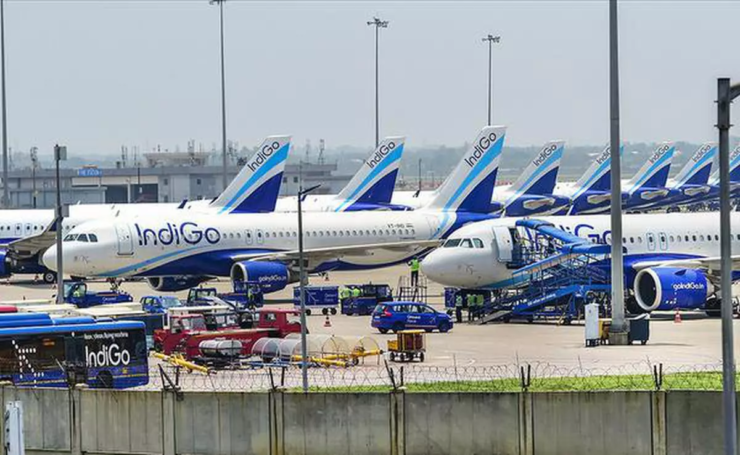
Hyderabad. The civil aviation sector in India is undergoing a remarkable growth, after the Covid-19 pandemic. Over all passenger traffic is booming, airlines are expanding fleets, and the government is helping the aviation sector with its ambitious regional connectivity schemes. The count of operational airports in the nation has surged from 74 in 2014 to 148 as of April 2023, showcasing a doubling of capacity.
In the last decade, Indian civil aviation sector has shown remarkable growth. The number of operational airports in the country has increased from 74 in 2014 to 148 as of April 2023, which in real terms means a doubling of capacity.
This phenomenal growth could be primarily attributed to the government’s proactive policies and initiatives, notably illustrated by the Regional Connectivity Scheme – Ude Desh ka Aam Nagrik (RCS-UDAN), launched in 2016. The initiative aimed to enhance regional connectivity by revitalising existing airstrips and airports, particularly focusing on unserved and underserved locations.
Meanwhile, the civil aviation sector too, is acting proactively. It is illustrated by the recent recognition bestowed upon Delhi and Mumbai airports, both achieving the prestigious Level 4+ Carbon Accreditation. This accolade underscores their dedication to minimising carbon footprints and championing responsible aviation practices. This is in consonance with the government’s emphasis on sustainability in the aviation sector.
UDAN initiative launched by the government in 2016, to give a boost to the aviation sector’s expansion in the country, by connecting every nook and corner of the country, has indeed borne fruit. Since 2016, the scheme has seen many new initiatives taking shape. UDAN’s goal to connect the unserved or underserved regions has also translated into regional economic development.
UDAN’s impact is evident by the emergence of four new successful airlines in the last six years. The scheme has not only facilitated the initiation of airline operations but has also played a crucial role in developing sustainable business models. Moreover, it encourages small regional airlines, for creating new expansion opportunities. The success of these regional airlines underscores the scheme’s effectiveness by creating a conducive ecosystem for the aviation business.
UDAN’s impact is evident by the emergence of four new successful airlines in the last six years. The scheme has not only facilitated the initiation of airline operations but has also played a crucial role in developing sustainable business models
Till the end of the last year, the civil aviation industry in the country had accomplished:
- Utilisation of Rs 3751 crores out of a budget allocation of Rs 4500 crores under the scheme, since its inception.
- On 517 RCS routes, operations have commenced connecting 76 airports, including 9 Heliports and 2 Water Aerodromes.
- Over 1.30 crore individuals have availed the benefits of the scheme, experiencing enhanced connectivity.
- In the Budget 2023-24, Rs 1000 crore has been allocated for the revival and development of an additional 50 aerodromes nationwide, affirming the commitment to sustained growth and accessibility.
Industry’s Growth
Post-pandemic experience, the sector has witnessed a substantial rise in passenger demand. Across both domestic and international sectors, air travel is currently witnessing an unprecedented surge in passenger volumes, signalling a robust recovery and a promising outlook for the industry. As per a report by Boeing, by November 2023 international aviation sector had recouped its pre-pandemic figures by 95%, while the domestic sector had recouped its 99% capacity.
In the period spanning January to September 2023, domestic airlines registered a significant increase, carrying 112.86 million passengers. This marks an increase of 29.10% from the 87.42 million passengers in the corresponding period in 2022.
Between January and September 2023, airlines experienced a surge in international passenger numbers, carrying a total of 45.99 million passengers. This reflects a substantial 39.61% increase compared to the 32.94 million passengers transported during the same period in 2022.
MoCA is actively promoting collaboration between developers of new greenfield airports and respective state governments to prioritise carbon neutrality and net zero emissions in the developmental planning stages
Environment Friendly Aviation
Meanwhile, keeping in tune with the times and international commitments, the Ministry of Civil Aviation (MoCA) has embarked on several initiatives aimed at achieving carbon neutrality and net zero carbon emissions at airports across the country. The process involves the standardisation of the Carbon Accounting and Reporting framework for Indian Airports. Airport operators with scheduled operations are urged to conduct comprehensive carbon emission mapping at their respective airports and gradually work towards achieving carbon neutrality and net zero emissions.
MoCA is actively promoting collaboration between developers of new greenfield airports and respective state governments to prioritise carbon neutrality and net zero emissions in the developmental planning stages.
The concerted efforts by the Government of India have yielded notable results, with airports such as Delhi, Mumbai, Hyderabad, and Bengaluru attaining Level 4+ and higher Airports International Council (ACI) Accreditation, thereby achieving carbon neutrality. Furthermore, a total of 66 Indian airports are currently operating on 100% Green Energy, underscoring the commitment to sustainable and environmentally conscious aviation practices.















